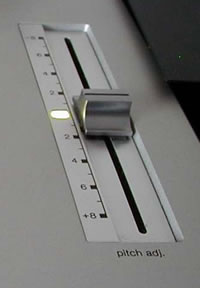About the Equipment . . .
Up until about 2001 I was using standard analogue equipment. That consisted of two Technics 1210s, a Gemini 676 mixer with on-board sampler, and a Zoom SampleTrak ST-224 sampler.
Then I got hold of ProTools Free for my Macintosh, and began to compile mixes on a G4 Dual 450MHz with 1Gb of RAM and two 20Gb hard drives. I can't recommend ProTools Free highly enough as a starting point for mixing on a computer. For one thing, it's free. Can't get better than that. And while it has its limitations - just eight mono or four stereo tracks - in every other respect ProTools Free is an enormously powerful bit of virtual studio software, which forms the basis of the kit you need to build highly professional mix CDs.
Visit the DigiDesign site and download a copy of ProTools Free, but be aware there is no free version for Mac OSX, only for OS9 and (ptui!) Windows.
You may find ProTools Free is a little restrictive after a while, so it's worth considering buying an entry level ProTools Package. I upgraded my set up by adding an M-Box, which comes with ProTools LE, a big improvement on the free version.
In addition to ProTools LE, I also use the shareware sound-editing tool Amadeus II, which I use to cut up the resulting 80 minute sound file into its component tracks. Not essential, but it does allow you to skip through the CD from track to track, which is more convenient.
More recently, I upgraded my Mac to a MacPro 2.66GHz. I have an extra internal hard drive or two, and I use one of those to run OSX 10.5 so I can still use my old MBox with ProTools 8.0. This version allows me as many tracks as I need.
I still use the length of a CD as a measure of a mix-length. So I burn off the resulting mix onto a CD, using Toast, still the best CD/DVD burning tool, I think.
